The White Dust Dilemma: How to Identify and Safely Treat Powdery Mildew on Your Balcony Plants This Fall
As the crisp air of fall arrives, you might notice a peculiar, unwelcome guest settling on your beloved balcony plants: a powdery white coating that looks like someone dusted them with flour. This white dust, far from charming, signals the presence of powdery mildew, a common fungal disease that can quickly spread and weaken your container garden. For small-space gardeners like you, facing down fall plant problems means protecting your hard-earned harvest and the beauty of your potted greenery.
Don’t let this fungal intruder discourage you. With the right knowledge and a few practical steps, you can identify, safely treat, and even prevent powdery mildew, ensuring your balcony garden remains vibrant through autumn. This guide provides you with actionable insights and straightforward solutions to tackle this pervasive container garden disease head-on. You will learn exactly what to look for, what causes its spread, and effective, eco-friendly ways to reclaim your plants from this white menace.
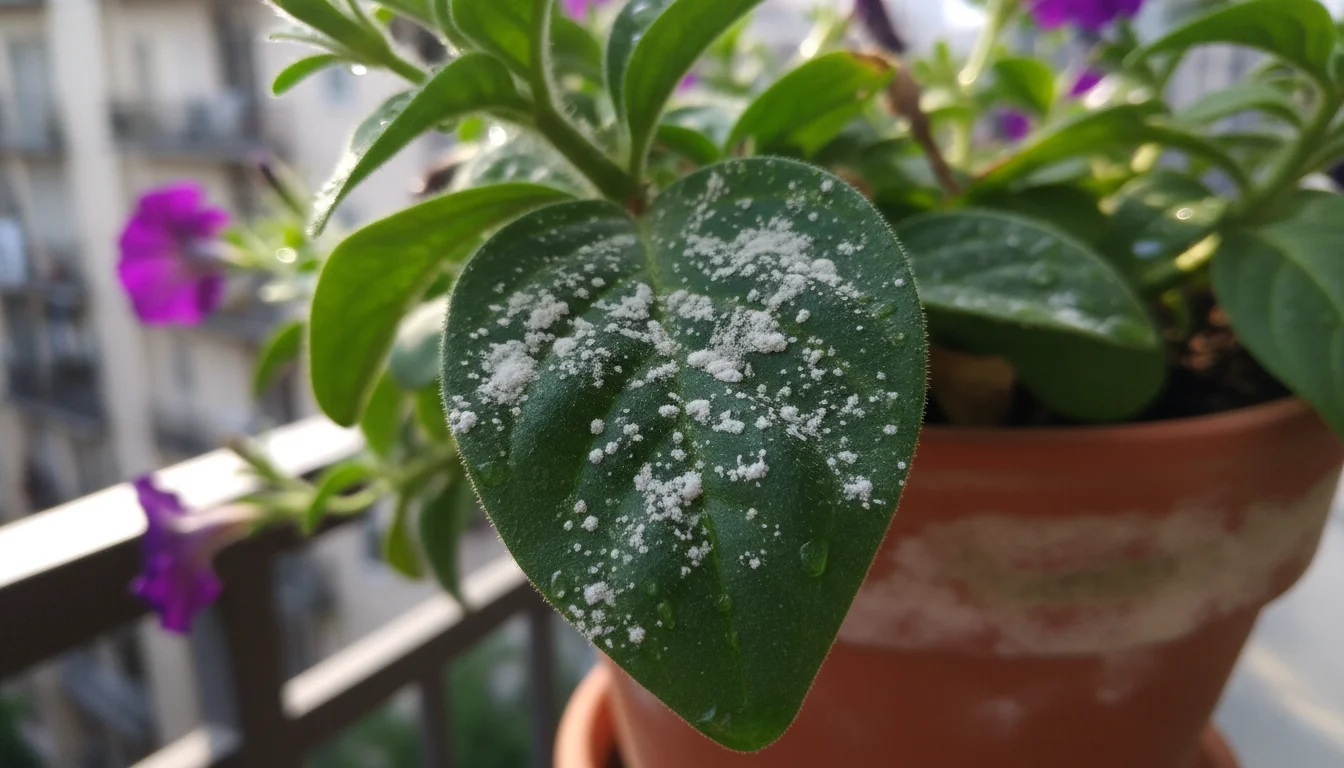
Understanding Powdery Mildew: What It Is and How It Appears
Powdery mildew describes a group of related fungal diseases that attack a wide array of plants, from vegetables like squash and cucumbers to ornamentals such as roses and zinnias. It manifests as a white or grayish powdery coating on the surface of leaves, stems, and sometimes even flowers and fruit. Unlike some other fungal diseases, powdery mildew often appears on the *outside* of the plant tissue, making it relatively easy to spot. The spores of these fungi are airborne, spreading easily from plant to plant on air currents. Once they land on a susceptible plant under favorable conditions, they germinate and begin to colonize the surface, forming the characteristic white patches you observe.
This fungal growth does not directly penetrate deep into the plant’s vascular system in the way some other diseases do. Instead, it extracts nutrients from the epidermal cells, the outermost layer of the plant. This saps the plant’s energy, hindering its ability to photosynthesize effectively. Over time, affected leaves may yellow, curl, distort, or even drop prematurely. For edible plants in pots, like how to get rid of white powder on squash leaves in pots, this can mean reduced fruit size and quality, or a complete failure to produce. Understanding this basic mechanism helps you grasp why early intervention is so crucial.
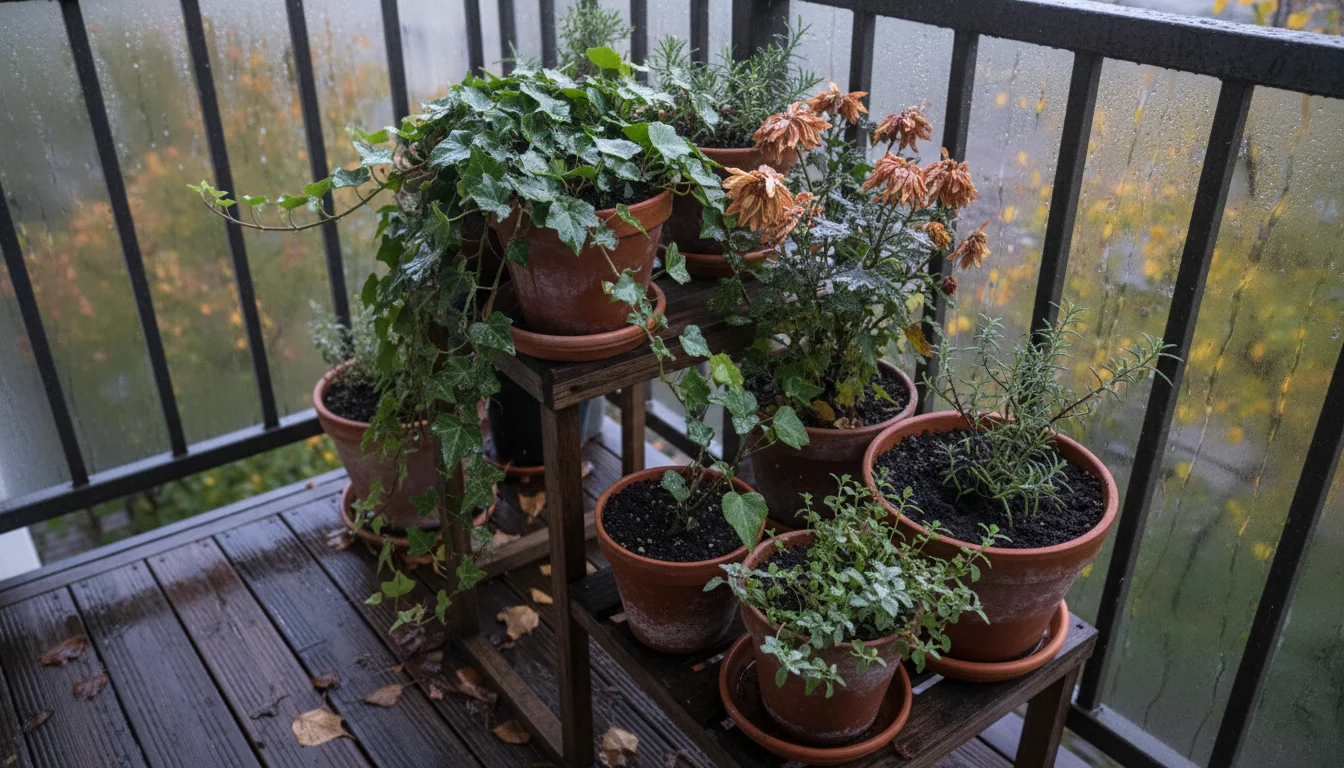
Why Fall Favors Powdery Mildew on Your Balcony Plants
You might wonder why powdery mildew seems to be a particular problem in the fall. Several environmental factors converge during autumn that create the perfect breeding ground for this fungal disease, especially in a compact balcony garden.
First, fall often brings a combination of warm days and cool nights. This temperature fluctuation leads to periods of high humidity, particularly overnight or in the morning. Powdery mildew thrives in these humid conditions, where moisture settles on leaf surfaces, allowing spores to germinate. While many fungal diseases need standing water to spread, powdery mildew can actually get worse with high humidity alone, even without prolonged leaf wetness.
Second, reduced sunlight intensity is common in fall. Shorter days and lower sun angles mean less direct sunlight reaches your balcony plants, especially those tucked away in corners or shaded by buildings. Plants under stress from reduced light become more susceptible to diseases. Also, less direct sun can mean slower evaporation of any moisture on leaves.
Third, inadequate air circulation plays a significant role. On a balcony, plants often sit close together in pots, forming a dense canopy. As leaves grow, they can become crowded, obstructing airflow between them. During the fall, as plants mature and foliage becomes denser, this issue intensifies. Poor air circulation traps humidity around the leaves, creating a microclimate ideal for powdery mildew to flourish. This is a common challenge for container garden diseases.
Fourth, many popular balcony plants, such as squash, zucchini, cucumbers, phlox, bee balm, and roses, are inherently susceptible to powdery mildew. As these plants reach maturity in late summer and early fall, their older leaves may become less vigorous and thus more vulnerable to infection.
Consider your specific balcony environment. If your plants are densely packed, receive less morning sun due to building shadows, or experience significant temperature swings between day and night, you have conditions ripe for this fall plant problem.
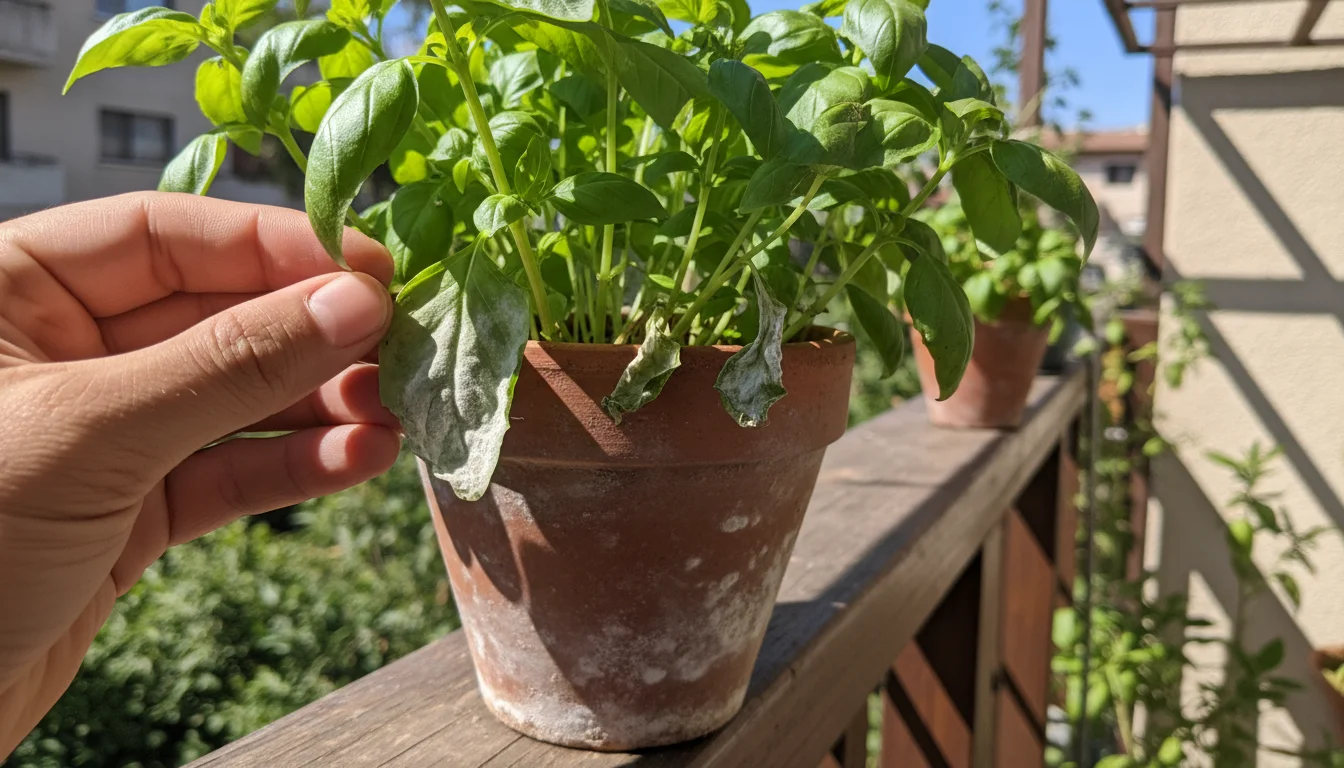
Identifying the White Dust Dilemma: A Close Look at Symptoms
Accurate identification is the first step toward effective powdery mildew treatment. While the disease is quite distinctive, early detection helps prevent widespread infestation and severe damage to your container garden.
1. The Signature White Patches: The most obvious symptom is a powdery, white, or grayish-white coating on the upper sides of leaves. It looks as if someone sprinkled flour or talcum powder on your plant. These patches start as small, circular spots and gradually expand, eventually covering entire leaves and stems. Sometimes, the undersides of leaves can also show these spots.
2. Location, Location: You will most frequently find powdery mildew on older, lower leaves first, as these often have poorer air circulation and stay damp longer. However, it can spread to newer growth, stems, and even flower buds and fruit. For instance, if you observe white powder on squash leaves in pots, it often begins on the mature foliage near the base of the plant.
3. Leaf Distortion and Discoloration: As the infection progresses, affected leaves may turn yellow, particularly around the white patches. They might also curl, crinkle, or become distorted. Severely infected leaves can turn brown and drop prematurely. This compromises the plant’s ability to photosynthesize, directly impacting its vigor and productivity.
4. Impact on Flowers and Fruit: Powdery mildew can also affect flowers, leading to discolored, distorted blooms or a failure for buds to open. On edibles, like those squash leaves, the fruit might become stunted, misshapen, or develop a rough, corky texture. You might also notice a reduction in overall yield.
5. Early Signs: Before the full powdery coating appears, look for subtle, dull patches on leaves. These might not be overtly white yet, but they signal a change in the leaf’s surface texture. Being vigilant and checking your plants regularly allows you to catch the disease early.
Remember, powdery mildew is highly distinctive. Do not confuse it with other white substances like insect eggs (which are usually more structured), or honeydew secreted by pests (which is sticky and often accompanied by sooty mold).
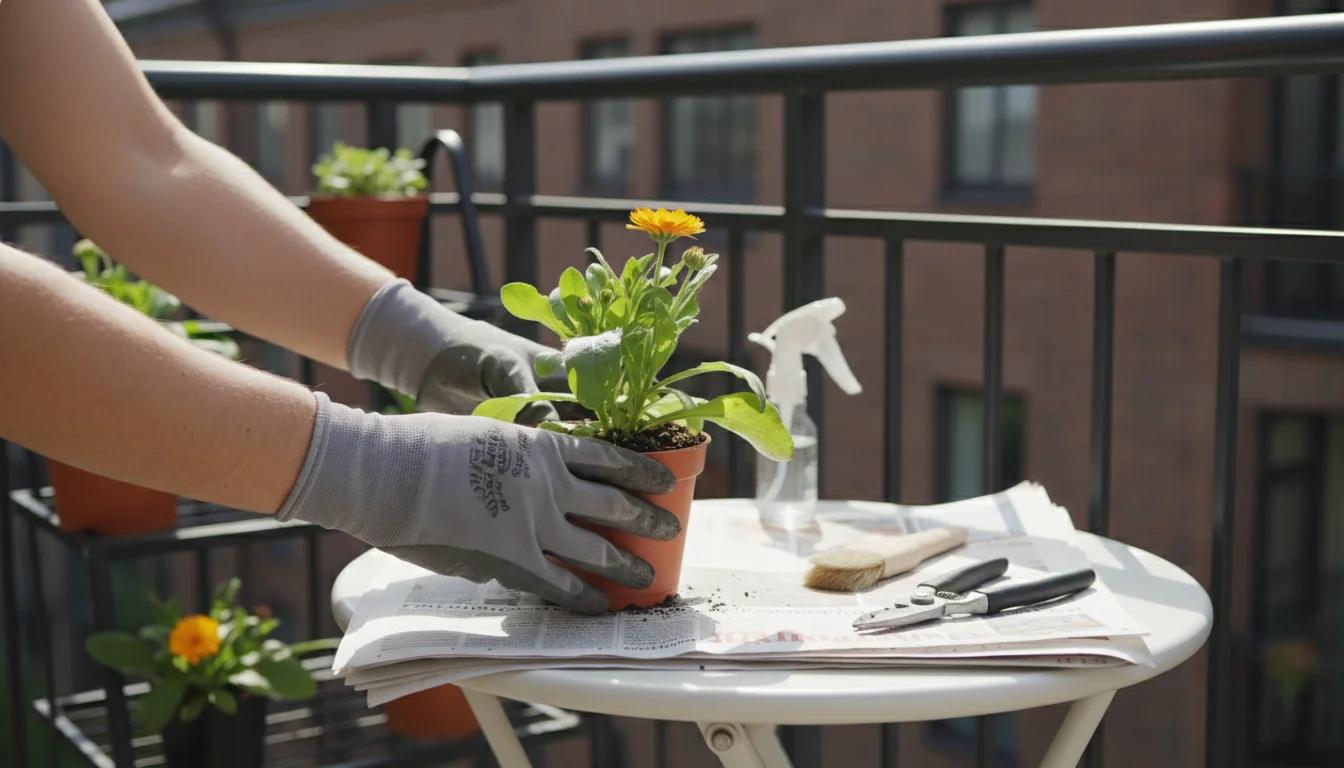
Your First Response: Trimming, Cleaning, and Isolation
Once you identify powdery mildew, immediate action is necessary to halt its spread and protect your other balcony plants. Your initial steps focus on physical removal and hygiene.
1. Isolate Infected Plants (If Possible): If the affected plant is small and portable, move it away from other healthy plants. This physical separation prevents airborne spores from easily jumping to new hosts. If it is a large container, at least clear the area around it to improve airflow.
2. Prune Affected Parts: Using clean, sharp pruning shears, carefully remove all leaves, stems, and flowers showing signs of powdery mildew. Cut back to healthy tissue. Be thorough, but do not remove more than one-third of the plant’s foliage at a time, as this can shock it. For plants like squash, where the leaves are often large, focus on the most heavily affected ones.
* Tool Hygiene: Crucially, sanitize your pruning shears between each cut, especially between different plants. A quick dip in a 10% bleach solution (1 part bleach to 9 parts water) or rubbing alcohol works effectively to kill fungal spores, preventing you from spreading the disease yourself.
* Disposal: Do not compost infected plant material. The spores can survive composting and reinfect your garden later. Instead, bag and discard it in the trash.
3. Clean Up Debris: Fungal spores can persist in fallen leaves and plant debris around your pots. Thoroughly clean the area beneath and around your infected plants. Remove any fallen leaves or spent flowers. This reduces the reservoir of spores available for new infections.
4. Wipe Down Surfaces: If your balcony railings, walls, or shelving came into contact with infected plant parts, wipe them down with a disinfectant solution (like the bleach solution mentioned above) to eliminate any lingering spores.
These initial steps are crucial for effective powdery mildew treatment. They physically remove a significant portion of the fungal inoculum, giving your plants a fighting chance and preparing them for further treatment.

Effective DIY Natural Powdery Mildew Spray for Containers
For small-space gardeners prioritizing eco-friendly solutions, several natural powdery mildew spray for containers options prove highly effective. These homemade remedies are generally safe for pets and beneficial insects, making them ideal for balcony gardens. You will want to apply these sprays thoroughly, ensuring complete coverage of both the tops and undersides of leaves, until the mixture drips off the plant.
Here are proven natural spray recipes:
- Baking Soda Spray:
- Ingredients:
- 1 tablespoon baking soda (sodium bicarbonate)
- 1 teaspoon horticultural oil (or mild liquid soap, not detergent)
- 1 gallon of water
- Instructions:
- Mix the baking soda and oil/soap into a small amount of warm water first to dissolve them completely.
- Add this concentrated mixture to the remaining gallon of water and stir well.
- Pour into a clean spray bottle.
- How it Works: Baking soda changes the pH on the leaf surface, making it inhospitable for fungal growth. The horticultural oil helps the solution stick to the leaves and can smother existing spores.
- Application: Apply every 5-7 days, especially after rain, until symptoms disappear. Test on a small area first to ensure no adverse reaction from the plant.
- Ingredients:
- Milk Spray:
- Ingredients:
- 1 part milk (any type, but whole milk may be slightly more effective)
- 9 parts water
- Instructions:
- Combine milk and water in a spray bottle.
- How it Works: The compounds in milk (potentially amino acids and salts) interact with sunlight to produce free radicals, which are toxic to powdery mildew spores.
- Application: Spray weekly, preferably on a sunny morning, for best results. This method is particularly effective as a preventative or for early-stage infections.
- Ingredients:
- Neem Oil Spray:
- Ingredients:
- 2 teaspoons cold-pressed neem oil
- 1 teaspoon mild liquid soap (as an emulsifier)
- 1 quart of water
- Instructions:
- Mix neem oil and soap in a small amount of water.
- Add to the remaining water and mix thoroughly.
- Pour into a clean spray bottle.
- How it Works: Neem oil is a natural fungicide and insecticide. It disrupts fungal growth and also acts as an anti-feedant for various pests that can weaken plants, making them susceptible. It is effective for powdery mildew treatment.
- Application: Apply every 7-14 days. Avoid spraying in direct hot sun, as it can cause leaf burn. Spray in the evening or early morning.
- Ingredients:
Consistency is key when using these natural remedies. You must apply them regularly and vigilantly, especially if you want to get rid of white powder on squash leaves in pots or other highly susceptible plants. Always follow product instructions for horticultural oils or neem oil, as concentrations can vary.

Advanced Treatment Options for Stubborn Cases
Sometimes, despite your best efforts with natural remedies, powdery mildew can persist or become severely entrenched, especially if you are dealing with a significant fall plant problem. In such cases, you might consider more targeted, yet still environmentally conscious, approaches.
1. Commercial Organic Fungicides: Several products are available at garden centers that are OMRI-listed (Organic Materials Review Institute) for organic gardening. These often contain sulfur, copper, or bacillus subtilis (a beneficial bacterium) as active ingredients.
* Sulfur: Works by inhibiting spore germination and fungal growth. It is effective but can burn leaves if applied in hot temperatures or on sulfur-sensitive plants (e.g., cucurbits at high concentrations, though specific formulations for powdery mildew on squash leaves are generally safe). Always read the label carefully for application rates and plant compatibility.
* Copper-based Fungicides: Act as broad-spectrum fungicides. Like sulfur, proper application is crucial to avoid phytotoxicity (plant damage). Use these sparingly and according to instructions.
* Bacillus subtilis: This biological fungicide uses beneficial bacteria to outcompete and inhibit the growth of powdery mildew fungi. It is a good choice for ongoing prevention and treatment, often very gentle on plants and beneficial insects.
2. Potassium Bicarbonate: Similar to baking soda, but often considered more effective and less prone to cause leaf burn. Potassium bicarbonate changes the pH on the leaf surface, creating an unfavorable environment for fungal development. You can find it as a standalone product or as an ingredient in organic fungicides. Follow package directions for mixing and application.
3. Horticultural Oils (Refined Oils): Beyond their role as an emulsifier in DIY sprays, highly refined horticultural oils (often labeled as dormant or summer oils) can be very effective at smothering existing powdery mildew and preventing new infections. These oils work by blocking fungal respiration. You must apply them thoroughly, coating all plant surfaces. Always check the label for specific plants, as some might be sensitive, particularly when temperatures are high. Apply in the cooler parts of the day.
When opting for commercial products, always read the label thoroughly. Pay attention to application rates, frequency, target plants, and any precautions for pets or children. These options provide stronger powdery mildew treatment when natural sprays need a boost.
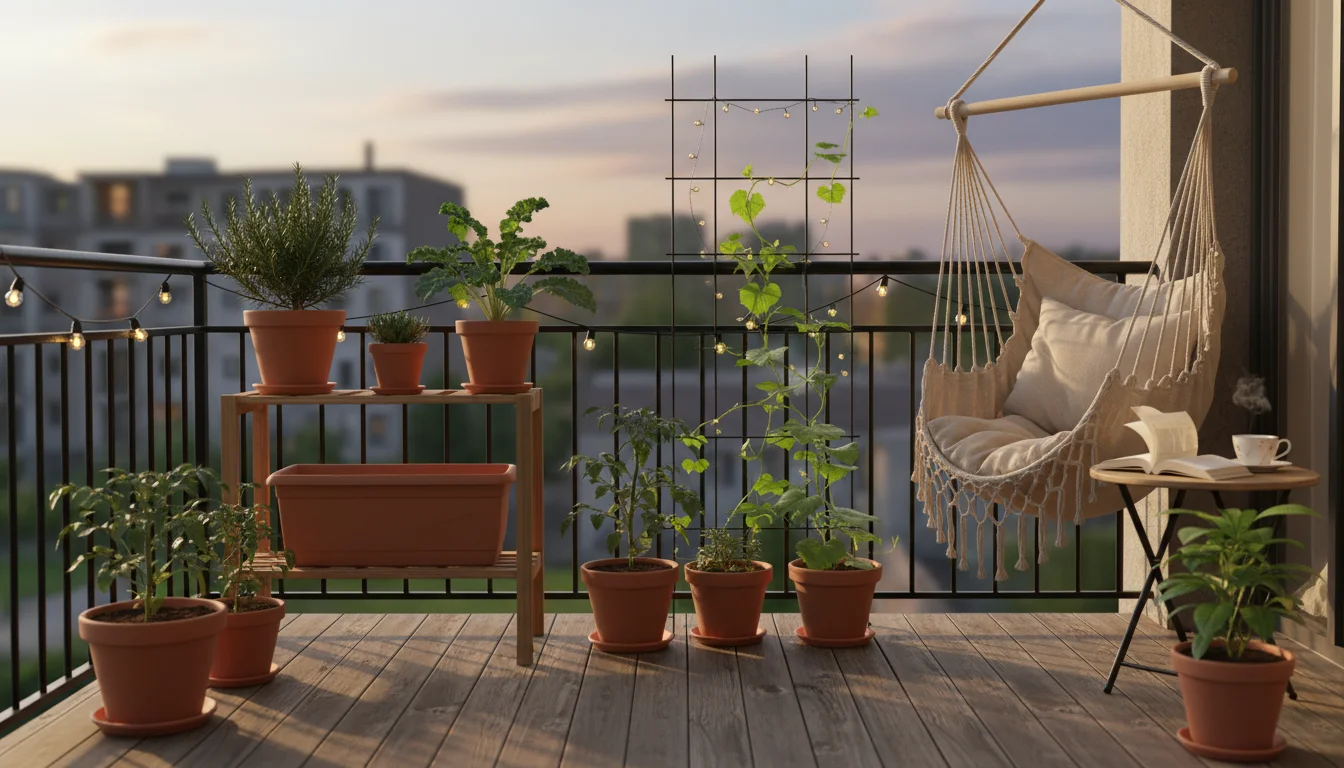
Preventing Powdery Mildew on Balcony Plants: Long-Term Strategies
Prevention is always better than cure, especially with persistent container garden diseases like powdery mildew. By implementing smart gardening practices, you significantly reduce the likelihood of this fall plant problem taking hold of your balcony oasis.
1. Choose Resistant Varieties: When planning your container garden, especially for plants known to be susceptible (like squash, cucumbers, roses, phlox), look for varieties specifically bred for powdery mildew resistance. Many seed packets and plant labels will indicate this resistance (e.g., “PM resistant” or “PMR”). This is your strongest proactive step.
2. Optimize Plant Spacing and Air Circulation: This is perhaps the most critical preventive measure for balcony gardens.
- Give Plants Room: Arrange your pots so that air can circulate freely around each plant. Avoid crowding. Ensure plants are not pressed tightly against balcony railings or walls.
- Strategic Pruning: Regularly prune away dense inner foliage, especially on bushy plants. This improves air circulation within the plant canopy and allows sunlight to penetrate. Remove any leaves that touch the soil, as they are more prone to fungal spores splashing up.
- Consider Verticality: For vining plants like squash or cucumbers, use trellises or stakes. Growing them vertically not only saves space but also lifts leaves off the ground, promoting better airflow and reducing moisture retention on foliage.
3. Water Wisely: While powdery mildew thrives in humidity, it generally does not require standing water on leaves to spread. However, overwatering or inconsistent watering can stress plants, making them more vulnerable.
- Water at the Base: Direct water to the soil surface, avoiding wetting the leaves, especially in the evening. This minimizes moisture on foliage.
- Morning Watering: Water early in the day. This allows any accidental splashing on leaves to dry quickly in the sun.
- Check Soil Moisture: Only water when the top inch or two of soil feels dry. Overwatering can lead to other issues, including root rot, further weakening plants.
4. Provide Adequate Sunlight: Ensure your balcony plants receive as much direct sunlight as their specific needs dictate. Most vegetables and flowering annuals prefer at least 6 hours of direct sun. While powdery mildew can tolerate some shade, well-lit plants are generally healthier and less susceptible. Rotate pots periodically to ensure all sides of the plant receive light.
5. Fertilize Appropriately: Avoid excessive nitrogen fertilizer. While nitrogen promotes lush, leafy growth, too much can lead to soft, tender foliage that is more vulnerable to fungal infections. Use balanced fertilizers and follow package directions. Consider organic options that release nutrients slowly.
6. Regular Inspection: Make it a habit to inspect your plants daily, or at least every few days. Look closely at the undersides and tops of leaves, especially on susceptible plants. Early detection allows for prompt action, preventing a minor issue from becoming a major fall plant problem.
By proactively addressing these factors, you create a less hospitable environment for powdery mildew, safeguarding the health and beauty of your balcony garden throughout the fall and beyond.
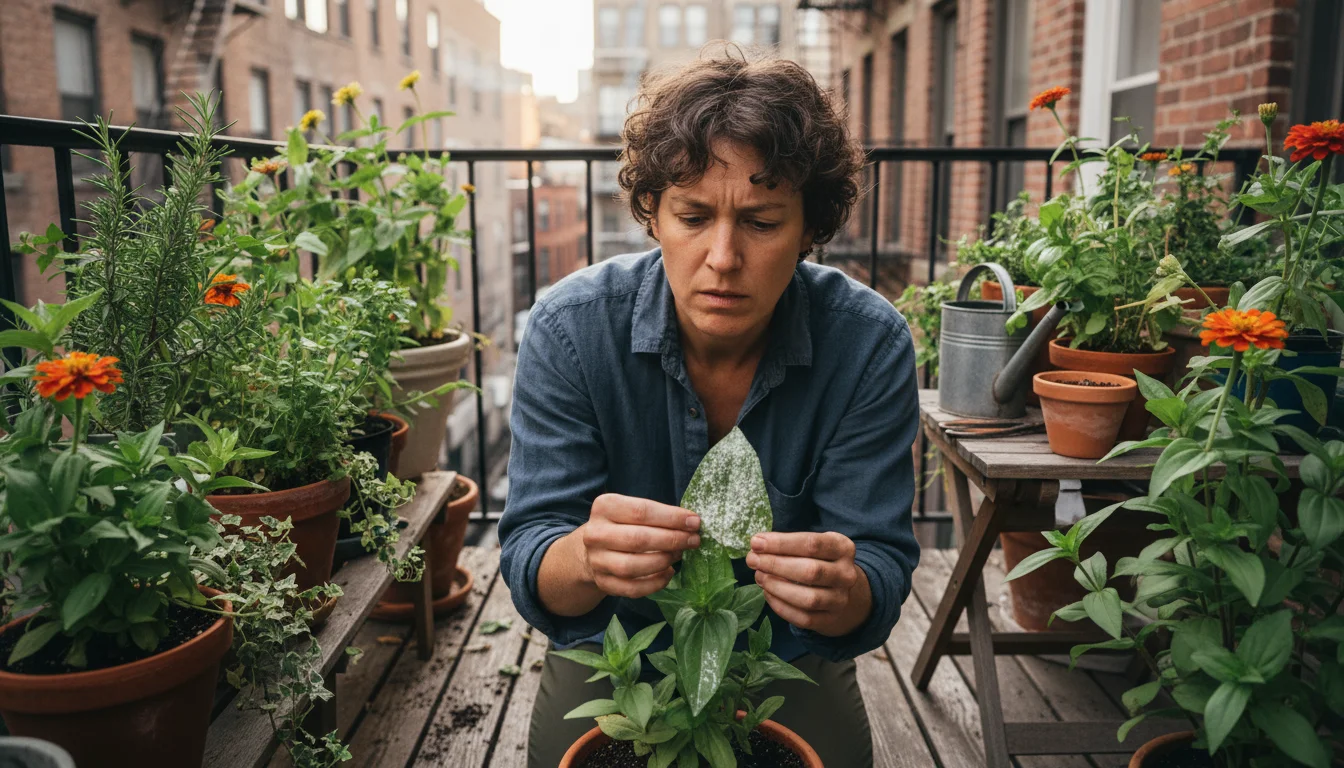
Troubleshooting Common Powdery Mildew Mistakes
Even with the best intentions, gardeners sometimes make errors that can either exacerbate a powdery mildew problem or hinder effective treatment. Understanding these common mistakes helps you refine your approach and achieve better results for your container garden diseases.
1. Ignoring Early Signs: Many gardeners overlook the initial, subtle patches of white dust, assuming it is just pollen or dust. By the time the disease is obvious and widespread, it becomes much harder to control.
* Solution: Conduct regular, thorough inspections of your plants. Pay close attention to susceptible varieties. Act immediately upon seeing the first sign of white powder.
2. Applying Sprays Incorrectly or Inconsistently: A common mistake is haphazard spraying, missing the undersides of leaves or not coating the plant thoroughly. Another error is applying a treatment once and expecting the problem to disappear permanently.
* Solution: Ensure complete coverage when applying any spray, targeting all leaf surfaces. Follow recommended application frequencies diligently, which often means reapplying every 5-7 days for several weeks or until symptoms are completely gone. Consistency is paramount for effective powdery mildew treatment.
3. Over-Pruning (or Under-Pruning): Removing too much foliage at once can shock the plant and weaken it further. Conversely, not pruning enough infected material leaves a significant source of spores.
* Solution: Remove only visibly infected parts, cutting back to healthy tissue. Aim for no more than one-third of the plant’s total foliage at one time. Regularly prune dense inner growth to improve air circulation, even on healthy plants.
4. Incorrect Watering Practices: While powdery mildew does not *need* leaf wetness, consistently watering plants in the evening or overhead can create high humidity conditions around the leaves that encourage the fungus.
* Solution: Always water at the base of your plants in the morning. This allows the foliage to dry out quickly during the day, reducing localized humidity.
5. Using Ineffective or Harmful Sprays: Applying household detergents (not mild soaps), high concentrations of bleach, or other inappropriate chemicals can damage your plants without effectively treating the mildew.
* Solution: Stick to proven natural remedies like baking soda, milk, or neem oil, or use commercial products specifically formulated and labeled for powdery mildew on ornamental and edible plants. Always test any new spray on a small, inconspicuous part of the plant first.
6. Neglecting Sanitation: Leaving infected plant debris on the balcony floor or composting it allows spores to survive and reinfect plants.
* Solution: Dispose of all infected plant material in the trash. Clean and sanitize pruning tools and surrounding surfaces after handling infected plants.
By avoiding these pitfalls, you empower yourself to manage and eliminate powdery mildew more efficiently, keeping your balcony plants healthy and productive.

Frequently Asked Questions
Can powdery mildew harm humans or pets?
While unsightly, powdery mildew is generally not harmful to humans or pets. It is a plant-specific fungus and does not cause disease in animals. You can safely consume fruits and vegetables from affected plants after washing them thoroughly, though heavily infected parts may have an off-flavor or texture. However, it is always a good practice to prevent pets from eating any plant material, especially those treated with any sprays.
Will rain wash away powdery mildew?
No, rain will not effectively wash away powdery mildew. In fact, rainy or humid weather can often worsen the problem by creating the moist conditions that the fungal spores need to germinate and spread. While a heavy downpour might physically dislodge some spores, the overall environmental conditions during rainy periods usually favor fungal growth.
Can I save a severely infected plant?
You can often save a severely infected plant, but it requires diligent and consistent effort. Start by aggressively pruning all visibly infected parts, then apply a natural or organic fungicide regularly. Improve air circulation and reduce humidity around the plant. If the plant is entirely covered and looks like it is dying, or if the infection keeps returning despite your best efforts, sometimes it is best to remove and dispose of it to prevent further spread to your other balcony plants.
Are certain plant types more susceptible to powdery mildew on balconies?
Yes, many common balcony plants are highly susceptible. These include squash, cucumbers, pumpkins, melons, zucchini, beans, peas, grapes, roses, lilacs, phlox, bee balm, impatiens, and zinnias. If you grow these, you should be particularly vigilant about preventing powdery mildew on balcony plants, especially in the fall.
How long does it take for powdery mildew treatment to work?
You might see an improvement in the appearance of the white powder within a few days of applying treatments like baking soda or neem oil sprays. However, completely eradicating the fungus and preventing its return takes consistent application over several weeks, typically 2-4 weeks. Continue treatment even after symptoms subside to target newly germinating spores and break the disease cycle. Prevention strategies are vital for long-term success.
For trustworthy gardening information, visit:
Chicago Botanic Garden, New York Botanical Garden, ASPCA Animal Poison Control, Michigan State University Extension — Gardening and University of Wisconsin Extension — Horticulture. These organizations provide expert, research-based advice for gardeners at all levels.
Disclaimer: This article is for informational purposes only and is not a substitute for professional gardening advice. Always consult local extension services or horticulture experts for region-specific guidance.

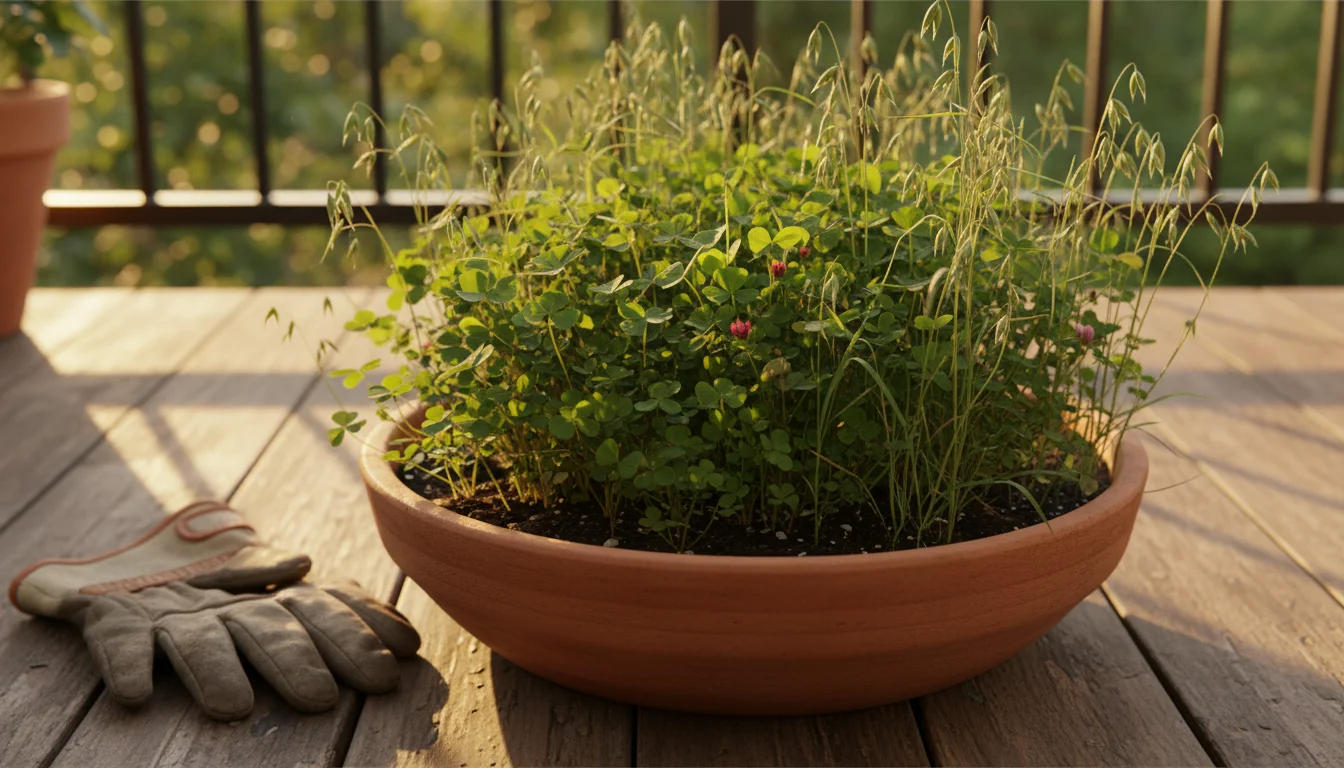

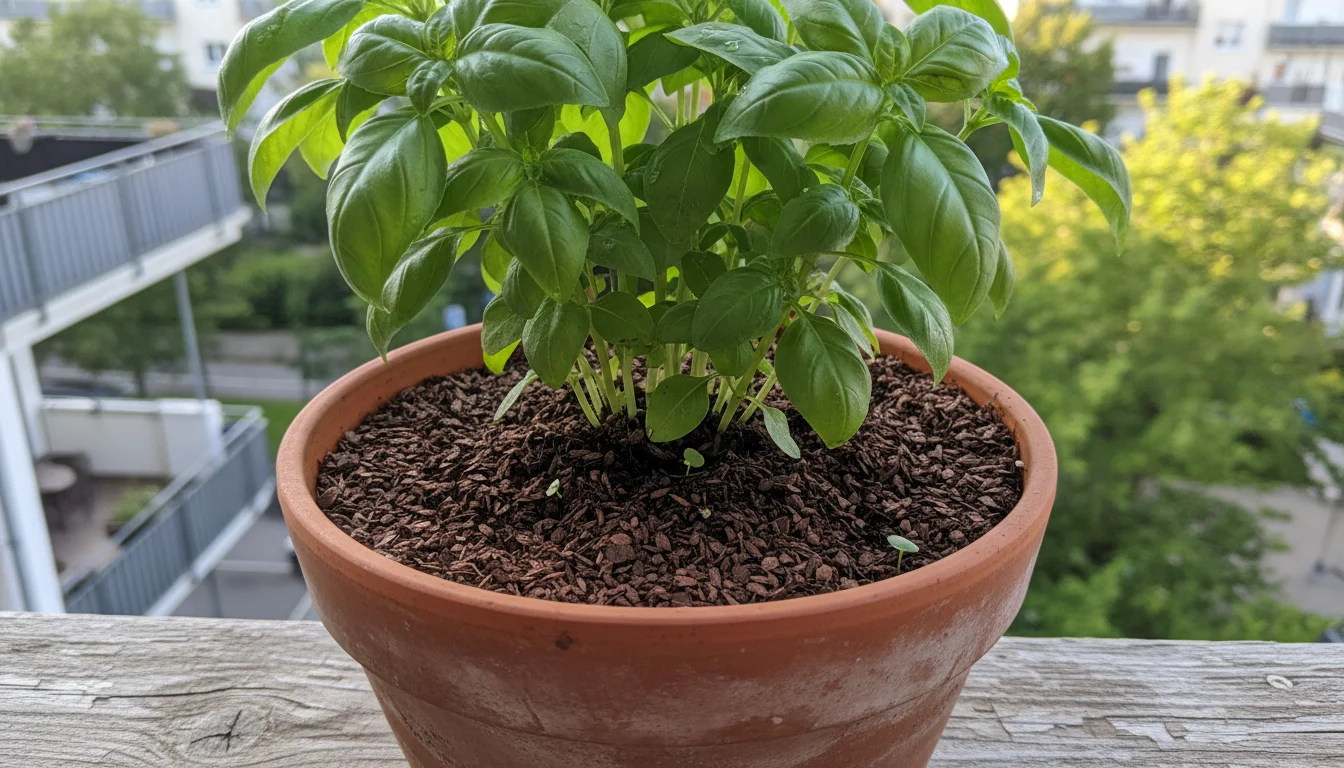
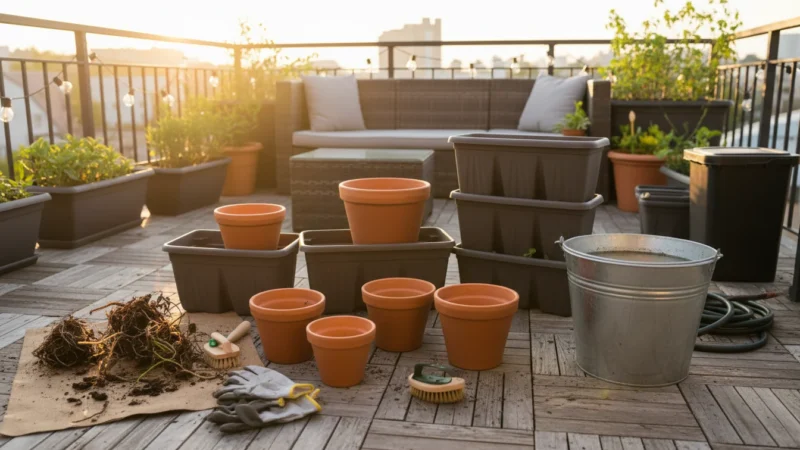




Leave a Reply